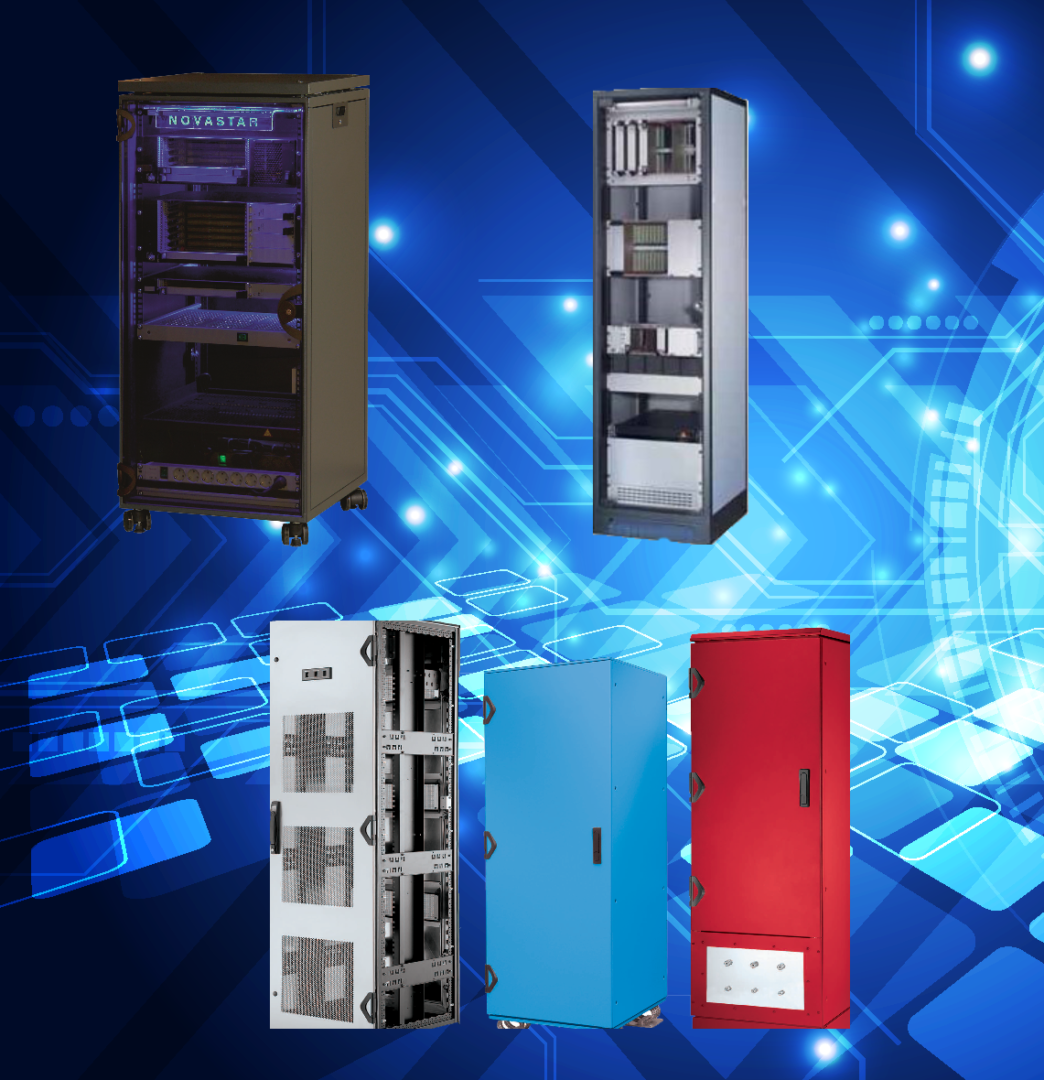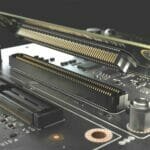Alan Cook, Sales Director of Foremost Electronics, the engineering-led Essex based importer and specialist distributor of electromechanical components, recommends designers and systems integrators take into account the following seven key considerations when considering the selection of a suitable cabinet;
Selecting a suitable cabinet for any electronic system can be a challenge. Applications and environmental conditions are major influences on sourcing the correct product. Other than the large 19” datacomms and telecoms markets and clean room or laboratory use, cabinets may be required to withstand or protect the installed equipment from extreme heat, high dust or other contaminant environments, radio-frequency/electromagnetic interference (RFI/EMI) and locations subject to high shock and vibration. To help select the best possible 19” electronics cabinet solution for a specific application this article outlines seven essential design considerations.
1 – Design Standards
Depending on the end system requirements, meeting appropriate design standards may be necessary. Standards for equipment safety and EMC compatibility are created and imposed by worldwide associations, government agencies and regulators. Standards result from technical agreements related to design specifications and environmental requirements that need to be fulfilled by a product or service. Some key design standards associated with electronics cabinets include the following:
IEC – International Electrotechnical Commission (IEC) develops International standards for all electrical, electronic and related technologies. Adoption is voluntary, although they are often referenced in mandatory national laws or regulations worldwide. IEC 60297 (mechanical structures for electronic equipment – dimensions of mechanical structures of the 19 inch series) standard provides crucial information for designing 19” cabinets – IEC 60297; IEC 60297-3-100 (19 inch Standard); IEC 60917-2-2 (25 mm metric Standard); ETS 300 119-2/-3 (European Telecommunication Standard)
RoHS Compliance – Restriction of Hazardous Substances. (RoHS), originated in the European Union and restricts the use of six hazardous materials found in electrical and electronic products.
MIL-S-901D – is a specific military test requirement designed for shipboard applications. Based on the type of equipment – essential or non-essential to the safety and combat-readiness of the ship – qualification testing is performed on a specified machine placed on a barge floating in a pond where explosive charges are detonated at various distances and depths in the pond to impart shock upon the equipment.
2 – Cabinet Dimensions
19” cabinets provide a standardised frame or enclosure for mounting various types of electronic equipment. Each piece of equipment is typically 19 inches (482.6 mm) wide, including edges or mounting ears, which allow for mounting to the rack frame. Cabinet height is defined in “Units” (U), each unit equals an industry standard of 1.75 inches (44.45 mm). Rack-mountable equipment is usually designed to occupy a specified number of “U”. Cabinet depths may vary depending on the application, typical depths range 600-1200mm. Detailed guidance regarding mechanical structure standards for 19-inch electronics may be referenced in IEC 60297-3-100.
3 – Weight Load Capacity
The amount of weight loaded into a cabinet can vary widely, it is therefore very important to consider this factor to determine the correct type of cabinet for a specific application. Whether it is to contain several banks of batteries for uninterruptible power supplies, or an array of hard drives in a datacentre, proprietary equipment or other heavy components, underestimation of weight loading requirements is a very common concern for engineers. It is especially difficult because some tests may be conducted to ensure optimal results, such as mounting the heaviest equipment at the bottom of the cabinet, which may not correspond to the layout in the final application. Working with heavy loads can also present other issues. Depending on the application, some cabinet designs may require dynamic protection, which in turn, necessitates a more robust design depending on the load.
4– Thermal Management and Cooling
Thermal management is an important design consideration for any electrical or electronics enclosure. Thermal overload can be a common reason for operating failures in electronic devices causing damaging and costly system downtime. The risk is increasing for equipment mounted into cabinets as the power density of modern electronics systems continues to grow, increasing the heat generated inside the cabinet. Heat dissipation calculations are measured in ΔT (Delta T), which is defined as the temperature difference between the intake air and exhaust air, or the amount of heat that is carried away by the stream of air exiting the heat load. A greater temperature difference signifies more heat being removed.
Cabinets designed for universal applications require broad thermal management compatibility and often need to meet more stringent performance demands than standard communications cabinets. There are numerous thermal management and cooling options that may be deployed in cabinets, from high perforation (referred to as a passive option), to fan trays, heat exchangers and air conditioners (all considered as active options).
Additional information regarding heat management design standards and recommendations are defined in IEC 61587-1.
5 – Shock & Vibration Protection
 There are two main dynamic requirements to mechanical stability– seismic and shock/vibration (S/V) tests. It should be understood that seismic and S/V tests are very different and each have very well-defined processes for loading cabinets with weight. Retesting with exact equipment is needed to ensure that the final solution offers the actual S/V or seismic protection that is required. The test may not be needed if the equipment is below the threshold of the official test requirements.
There are two main dynamic requirements to mechanical stability– seismic and shock/vibration (S/V) tests. It should be understood that seismic and S/V tests are very different and each have very well-defined processes for loading cabinets with weight. Retesting with exact equipment is needed to ensure that the final solution offers the actual S/V or seismic protection that is required. The test may not be needed if the equipment is below the threshold of the official test requirements.
Shock and Vibration – This is the go-to test for equipment that will be used in mobile applications and simulates a typical environment within a train car or vehicle, or close to vibration-generating equipment such as a punch press or similar industrial machinery. Minimization of weight and S/V-optimised designs offer long-term benefits to users, especially in transportation applications.
Seismic – Seismic activity is a very complicated but well-studied phenomenon. Testing equipment and processes are well defined and well known, with multiple laboratories capable of carrying out testing. The test consists of placing a fully loaded standard cabinet on a platform that can move in any direction and simulate the earth’s movements during a seismic event. Particular deformation and movement of the cabinet components can lead to test failure.
6 – Electromagnetic Compatibility (EMC)
Electromagnetic interference (EMI) is a constant concern for equipment manufacturers. As electronic systems become ever faster and are integrated into all types of manufacturing, production and automation environments e.g. Industry 4.0, SMART factories and intelligent buildings, the issue of EMI has become critical. Environments that were once considered EMI-free are becoming more and more susceptible to interference due to an increase in automation equipment and attendant electronics emissions. Visual inspection alone of cabinet gaskets does not suffice to ensure adequate EMI protection. Proper tests and results are needed to ensure that a cabinet design meets the application requirements. Gasket integration to provide a Faraday effect is not a simple matter as it may compete with requirements such as cabinet cooling and perforations for air flow. The latter demands an understanding of the entire system, not just individual components, and necessitates a number of accessories that may appear redundant but solve very specific problems. Additional design requirements and recommendations can be referenced in IEC 61587-3.
7 – Environmental and Safety
IEC 60529 provides guidance for classifying the ingress protection rating (IP Codes) of enclosures. IP deals with dust and water protection. Equipment that has better protection against dust, objects and water will have higher ratings. IP ratings have two numbers – one shows dust/object protection and the other shows water protection.
There a number of industries where the requirements will be higher than in others; these include transportation, military and food and beverage processing, which will have high requirements for IP rating to ensure system reliability, process and operator safety.
Sourcing an enclosure
It is beneficial any equipment designer or systems integrator to partner with a supplier that has a solid understanding and experience of the many electrical, electronic and mechanical requirements that must be considered when specifying an enclosure. Access to accessories such as internal hardware, cable access, strain relief and EMC control provides a single source of supply for the complete project, ensuring component compatibility and simplifying the specifying and sourcing process.
For more information call +44 (0)1371 811171, email sales@4most.co.uk or visit https://www.4most.co.uk/








